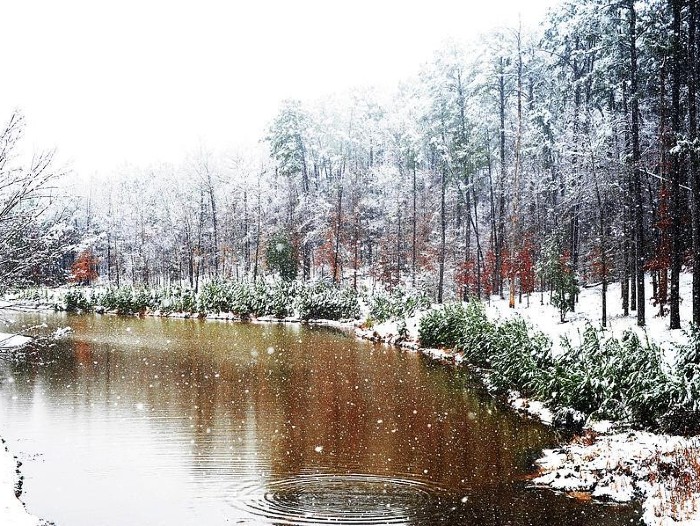
After an epidemic of yellow fever or smallpox in June 1765, a group of 37 Acadians left Fausse Pointe to settle further north. Some choose the prairie which will later take the name of Prairie Côte Gelée in its eastern part between the Tortue and Vermilion bayous south of the current town of Lafayette (see enclosed map by Donald J. Arceneaux). The Broussard and Thibodeaux families were the first to arrive on the site that would become Broussard on the outskirts of Lafayette, where the charming “Acadian Village” now stands. Within a few weeks, other Acadian families, notably the Comeau, the Landry, the Breaux, the Girouard, the Ménard and the LeBlanc, joined the nascent colony. Then one morning like no other, a winter frost covered the trees and vegetation with a white coat. Amazed by this sumptuous painting, the Acadians decided to name their new village “Côte Gelée” which would become Broussard 119 years later in honour of Valsin Broussard, a direct descendant of Beausoleil. Other Acadian refugees did prefer to ascend the Bayou Teche to a westerly curve upstream of the present village of Parks and settled in a place they called La Pointe du Repos. Aman Thibodeau, Paul Thibodeaux, François Guilbeau, Michel Bernard, Simon Leblanc, Charles Guilbeau, Marie Babineau (widow), and Anne Catherine Ducrest (widow) are the founding settlers of La Pointe du Repos.
On Donald J. Arceneaux’s map, from the dark dotted line in black representing the outline of “the coast”, vast grasslands comprised of many different kinds of wildflowers, such as the Louisiana iris (a purple-black flower bandaged with gold, the texture of which being velvety and having magical appearance) extended “offshore” (a marine expression used to refer to the sea which lies far away from the coast and where space is plentiful). According to botanist Brian Sean Early of the Louisiana Department of Wildlife and Fisheries “The coastal prairies” were once home to several varieties of grasses, “as well as bison, red wolves, whooping cranes, prairie chickens, bobwhite quail, various waterfowl, a variety of pollinators and other wild species”. The Cajun Prairie stretches from Côte Gelée (Broussard) in the eastern zone to Lake Charles in western zone.

A marine vocabulary
The Petit glossaire cadien-français européen of Louisiana State University teaches us that “to navigate a char” means “to drive a car” and that “to moor” means “to tie up”. It is therefore not surprising that the Cajun Prairie is dotted with marine terms such as, for example, Île Petite Anse (Avery Island), Île Piquante (Patoutville), Grosse Île near Abbeville, Anse La Butte, Anse Robert, Anse Hébert, Pointe-aux-Chênes, Pointe Coupée, and Pointe-aux-Loups. These pretty French names bear witness to the maritime past of the inhabitants who came from a distant Acadia on the North Atlantic coast. An “île” (island) is a wooded area in the middle of the great expanse. An “anse” (cove or bay) is any curvy part of the woods. A “pointe” (point) is a shady place in the meadows that takes the form of a peninsula. A “côte” is simply a coastline. Avery Island, south of Broussard, is located in the centre of a lowland or plain called Prairie Au Large.

The numerous Acadians who ventured into the prairies over time established a subsistence lifestyle involving hunting, fishing and trapping, along with limited farming and ranching activities. During the decades that followed (1770 – 1880), the Prairie Cajuns, also known as the Cajun Prairie people, lived in almost total isolation, thus developing a rich subculture comprising unique cuisine, entertainment and popular traditions, such as the Mardi Gras Run festivities that take place across the prairies. Rooted in medieval French history and brought to Louisiana in the 19th century, Courir de Mardi Gras has many rituals that come together in a joyful celebration of Mardi Gras or Fat Tuesday (also Shrove Tuesday).
It is important to know that Acadia, which became Nova Scotia in 1713, is a large peninsula with 13,300 kilometers (8,264 miles) of coastline including the islands.
